I am @shadow04
Feom #bangladesh🇧🇩
How are you all? I hope that by the grace of Almighty Allah, you are all well. Alhamdulillah, I am also very well. Today I have come to you to present the Kangal Harinath Memorial Museum, a branch of the National Museum of Bangladesh. So let's get started,,,
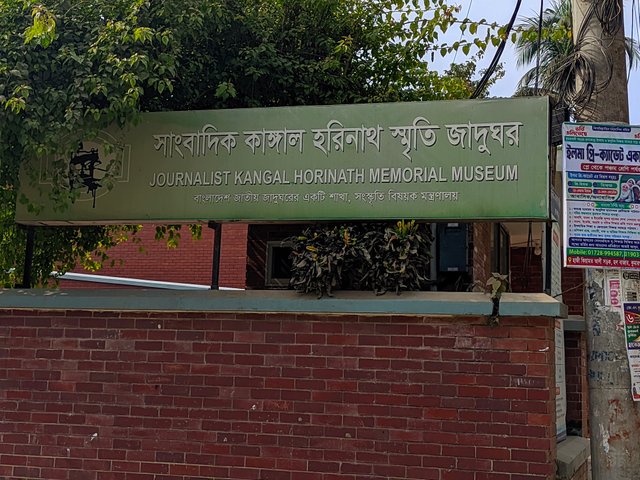 Museum entry Museum entry |
|---|
However, before learning about the museum, let's learn a little about Kangal Harinath,,
Kangal Harinath was a writer, journalist and Baul song writer, who was born in 1833 in Kumarkhali Upazila of the then Nadia (now our Kushtia) district. Although he could not study much himself due to financial difficulties, he established a girls' school in Kumarkhali in 1955 with the help of the then zamindar Krishnanath Majumdar, which is also called the first girls' school in Bangladesh by some. Thousands of girls are still gaining knowledge from this school in Kumarkhali to enhance their talent.
.jpg) Portrait of Kangal Harinath Portrait of Kangal Harinath |
|---|
He raised his pen against the British to highlight the sorrows and hardships of the village people and started journalism. At the beginning of his journalism, he used to write in "Sambad Prabhakar", but in 1863, he started "Grambarta Prakashika" on his own initiative, which was an LT Masil magazine and became fairly popular. Its price was 1 paisa at that time, i.e., only 0.0006 steem equivalent. However, due to the conflict between the British rulers and the then landlords, he was forced to close this magazine after 18 years.
He also wrote a book of Baul songs in 16 volumes, called Baul Fakirchad Er Geetabali. One of the popular Baul songs written by him is the song "Hari Din To Gelo, Sandha Holo Par Karo Amare". This great man passed away in 1896.
| Now let's learn about the museum,, |
|---|
To enter the Kangal Harinath Memorial Museum, I first came to Kumarkhali bus stand, then from there I walked to the Kangal Harinath Museum located in Kundapara, to enter the museum you have to collect a ticket, earlier it cost 10 taka/.9 steem, but when I went to visit, its price had increased to 20 taka/1.8 steem.
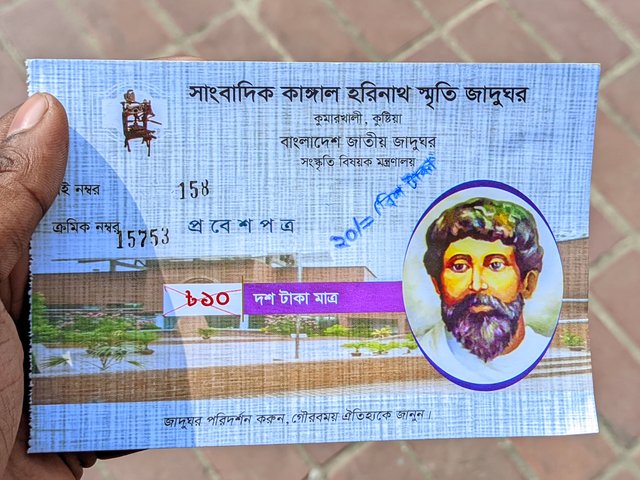 Entry ticket Entry ticket |
|---|
After collecting the ticket, I entered inside. The museum's open stage is located at the entrance. As a result of the renovation of the museum, this open stage was created in 2023, where you can also see a portrait of Kangal Harinath. After the museum was renovated, Mr. Kamruzzaman, Director General of Bangladesh National Museum, inaugurated it.
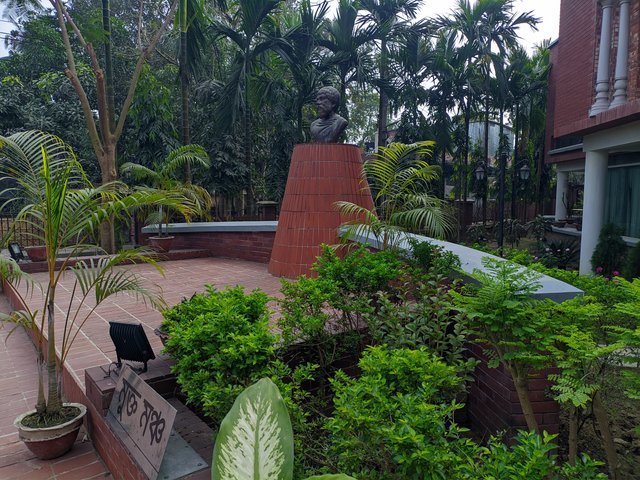.jpg)
.jpg) The museum's open stage The museum's open stage |
|---|
The museum is located on the second floor on the right after passing the open stage, and on the first floor below, in addition to the people engaged in the conservation of the museum, there is an antiquities research center and a club of local journalists. So instead of going downstairs, I started going to the main museum on the second floor. In the middle of going to the second floor, there is a quarter next to the stairs where you can leave your bags if you want.
After going up to the second floor, I first entered an open exhibition space outside the main museum. This place is very small but quite beautiful. The place is quite cheerful in the cool northern wind. When an event is organized in the museum, various things are displayed in this place. On the east side of the exhibition space, there is a beautiful place surrounded by glass where prayers are offered, this place was really quite beautiful.
| Exhibition & Prayers space |
|---|
Then I entered the main area of the museum where all the materials used in Kangal Harinath's printing press were arranged. First of all, I will show you a wooden block, with the help of which he used to do the printing work. This wooden block, except for the front part, had many square-shaped holes in the form of blocks on the remaining three sides and the middle part, and there were two wooden slates on the back.
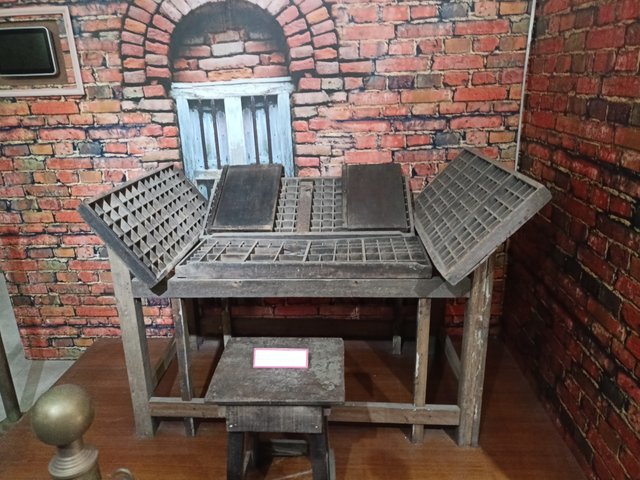 Painting wooden blocks Painting wooden blocks |
|---|
The zinc block, various oils and the brush used to coat them properly are also still preserved in the museum. In addition, several pieces of paper printed during that time are still on display as souvenirs.
| Equipment used in printing houses |
|---|
He used several pieces of stone, which were somewhat square in shape, to print newspapers in the wooden printing press, two of the stones he used are still preserved, which have been bearing witness to history for more than a century.
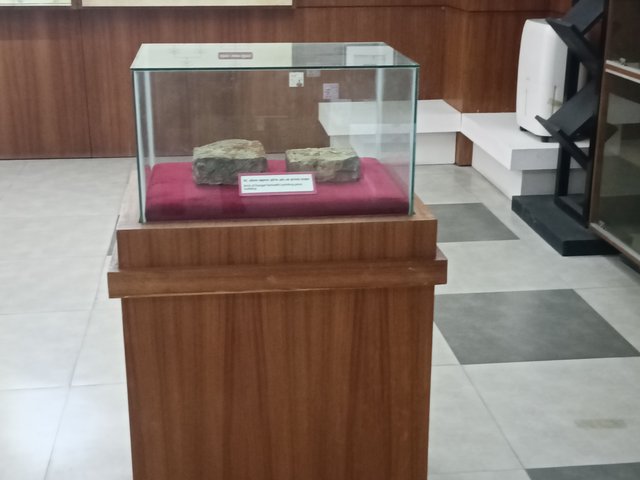 Stone used in printing Stone used in printing |
|---|
Kangal Harinath later used a motor-driven printing press, a comparatively less advanced wooden printing press, and then a much more advanced and larger iron printing press. As a witness to history, both these machines have been preserved in the Kangal Harinath Memorial Museum.
| Motor-driven printing press |
|---|
Apart from these, there are hundreds of pictures spread across the walls of the entire museum, which show his various activities with other important people and poets during that time. However, I entered the museum after the scheduled closing time of the museum, but I was given 5 minutes extra time, because I am a person from Kumarkhali Upazila. So, due to lack of sufficient time, I was unable to take pictures of the important things on the walls.
| Place name | Kangal Harinath Memorial Museum |
|---|
| Type of place | Museum |
| Google maps | Click here |
| Google Coordinates | 23.855812,89.236812 |
| Atlas pin code | [//]:# (!steematlas 23.8558125 lat 89.2368125 long d3scr) |
| Open | 5/7 (Thursday & Friday off) |
| Opening & closing time | 8.30am-5.30pm |
| Website | No |
| Rate | 9.5/10 |
| 🔰 Thanks for your valuable time 🔰 |
|---|

 Museum entry
Museum entry.jpg) Portrait of Kangal Harinath
Portrait of Kangal Harinath Entry ticket
Entry ticket.jpg) The museum's open stage
The museum's open stage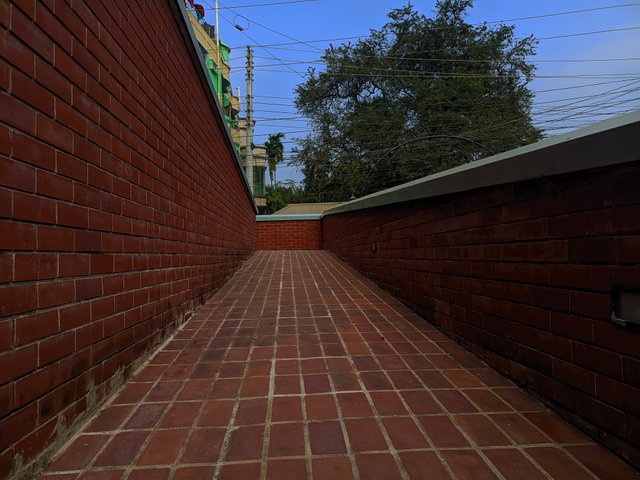
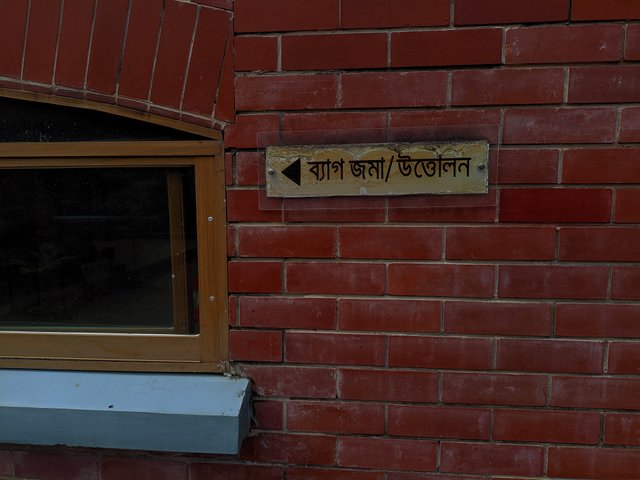
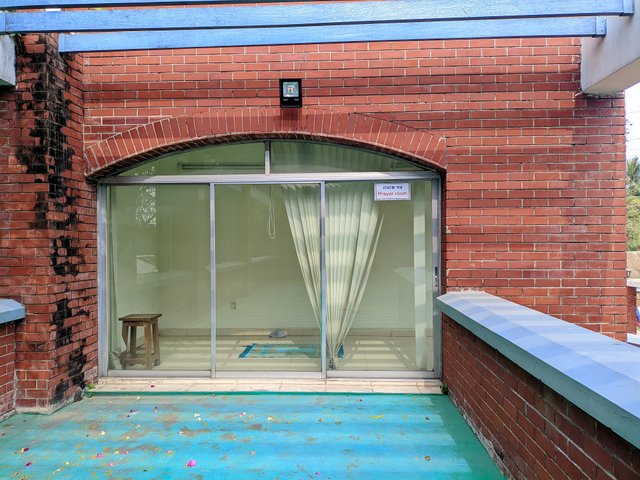
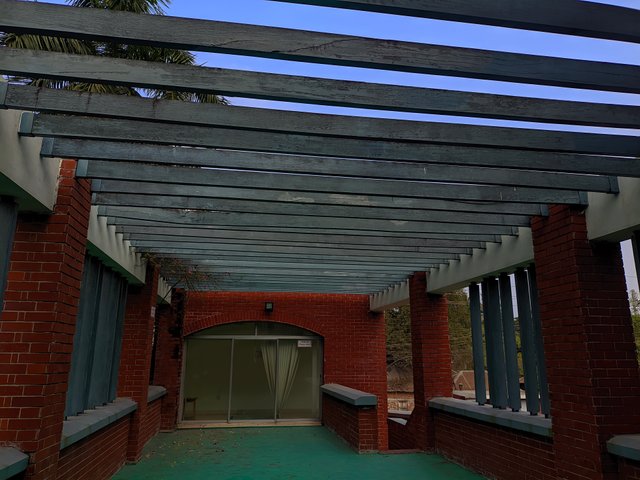
 Painting wooden blocks
Painting wooden blocks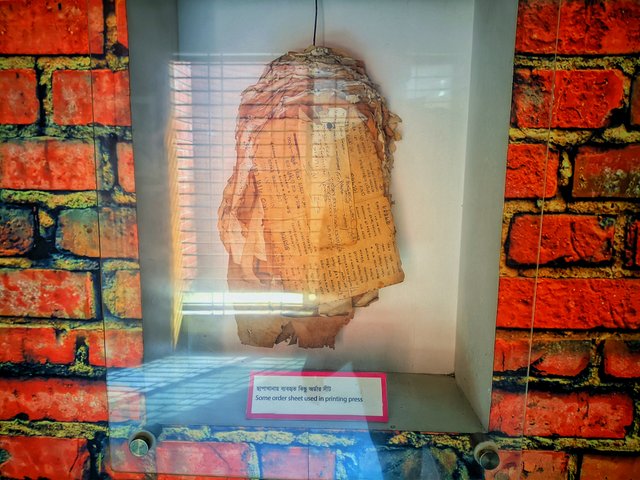
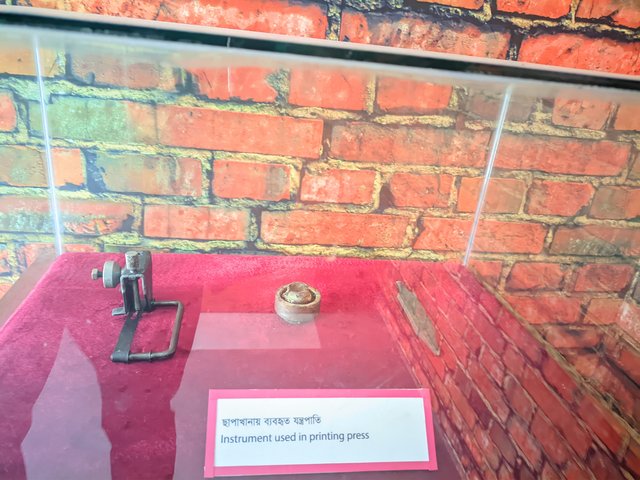
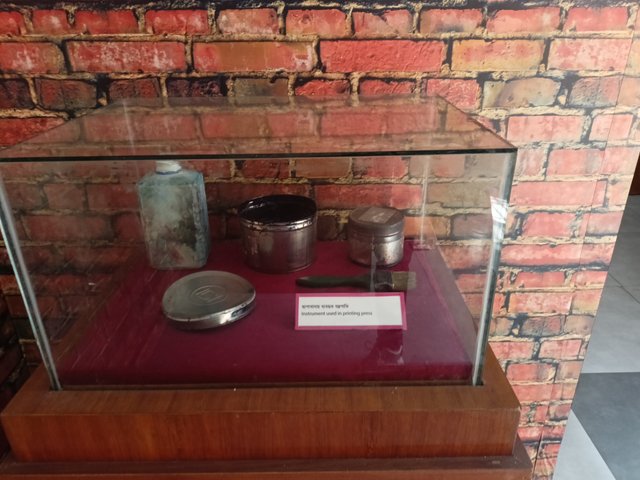
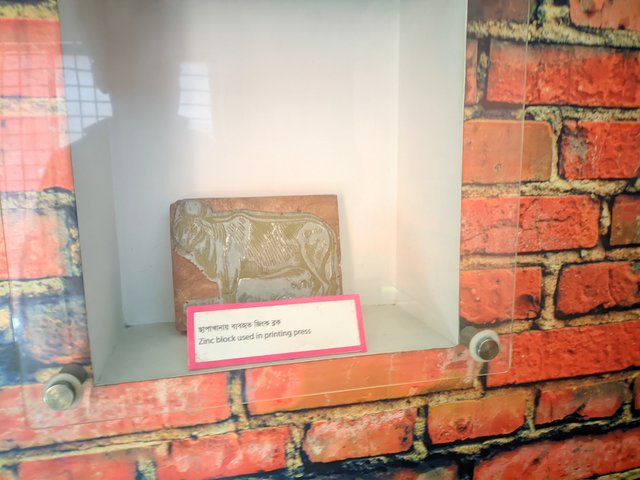
 Stone used in printing
Stone used in printing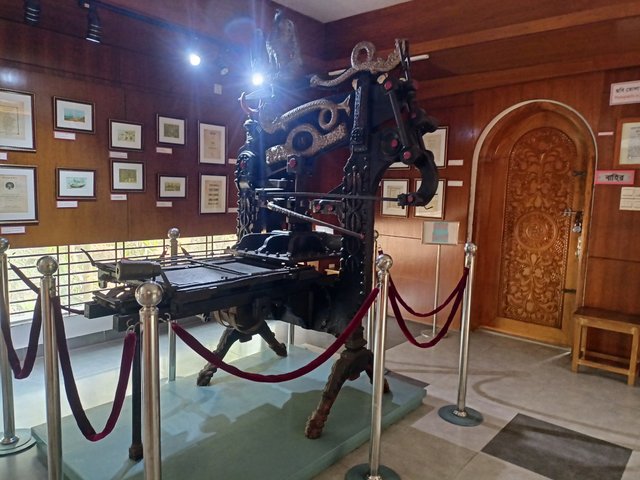
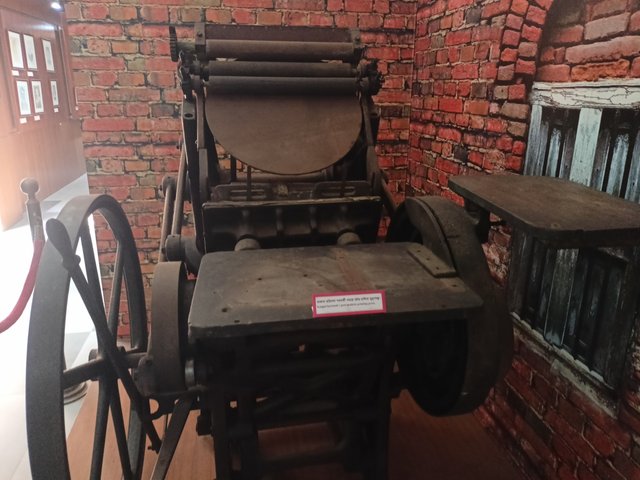
.jpg)

X promotion link :
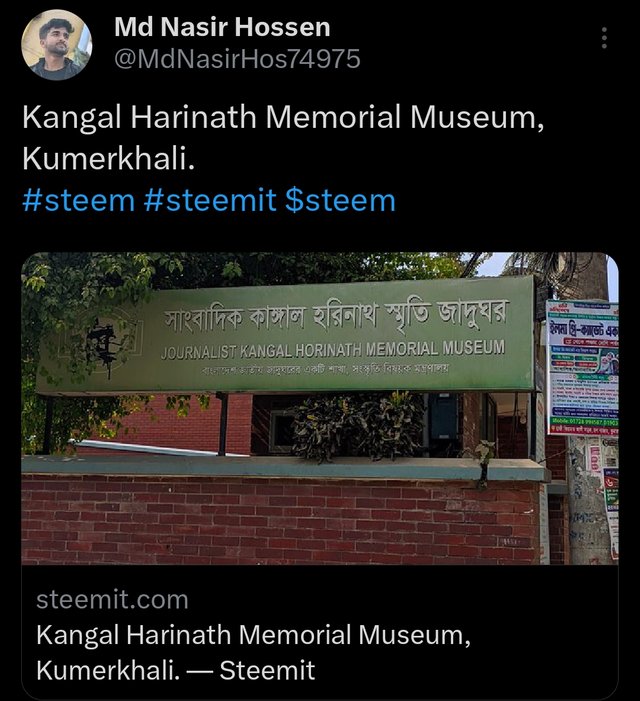
https://x.com/MdNasirHos74975/status/1952592800689820158?t=xoosYJmV_scLdTKuuFENwQ&s=19
Thank you for posting this on Steem Atlas.
To help improve your posts on Steem Atlas, and increase your chances of winning in the Atlas Challenge, check out these 21 Tips.
Thank you for setting a beneficiary to @steem-atlas, it will help the project grow.